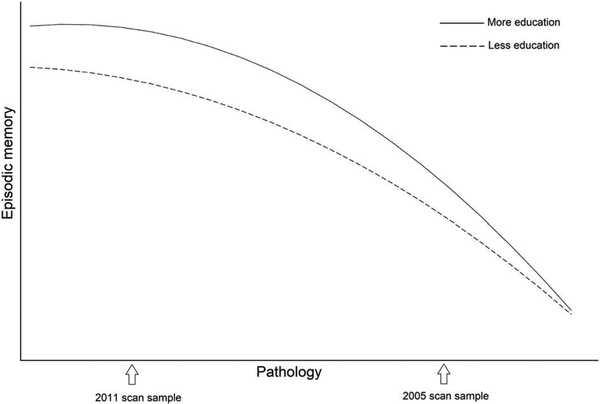Figure 6.
Theoretical rendering of cognitive reserve, modified from Barulli & Stern (2013). Earlier in the process of age-related disease (i.e., left half of Figure 6), individuals with more education are predicted to show a weaker association (i.e., shallower slope) between pathology (all types) and episodic memory than individuals with less education, in line with the findings in the 2011 scan sample. As pathology continues to accumulate (i.e., right half of Figure 6), individuals with more education are predicted to show a stronger association (i.e., steeper slope) between pathology and episodic memory than individuals with less education, in line with the findings in the 2005 scan sample. This model is also consistent with the findings of Brickman et al., (2011) in that, at any given level of cognition (i.e., at any point on the y-axis), individuals with more education are predicted to have more advanced age-related pathology than individuals with less education.

